





























































Embarking on the open water is an exhilarating experience, flled with the promise of adventure and relaxation. Whether you’re a seasoned sailor or a weekend cruiser, protecting your vessel with proper insurance is not just a choice—it’s a necessity. Explore the reasons why every boat owner should prioritize boat insurance for a worry-free voyage.


The open water can be unpredictable, with unexpected storms, collisions, or other potential accidents. Boat insurance can give you fnancial protection if there is damage to your vessel, providing coverage for repairs or replacement.
Accidents on the water can result in damage to other boats, docks, or even injuries to passengers. Boat insurance offers liability coverage, which can pay for damages or injuries you’re liable for while boating, up to specifed limits, and lawsuit costs if you’re sued. This includes damage you cause to another watercraft or if someone on or near your boat is injured and you’re found to be legally responsible.
Unfortunately, boat theft and vandalism are realities that boat owners face. Boat insurance has comprehensive and collision coverage that can protect you against events outside of your control, including theft and vandalism.
Accidents on the water may lead to injuries for you or your passengers. Boat insurance offers a range of optional medical payments coverage limits, helping to cover medical expenses if you are in an accident or someone is hurt on your boat, regardless of fault.
If you fnanced the purchase of your boat, most lenders require insurance coverage to protect their investment. Having boat insurance not only fulflls these requirements but also gives you peace of mind knowing that your fnancial interests are safeguarded.
Some water municipalities and marinas may require proof of insurance for docking or accessing certain areas. Boat insurance allows you the fexibility to explore different destinations without worrying about entry restrictions.
Emergency towing and assistance
Progressive boat insurance can include optional Sign & Glide® On-Water Towing coverage. If your boat is disabled or breaks down on the water, Sign & Glide® pays for on-water towing, jump starts, soft un-groundings, and fuel delivery.
Wreckage removal
If your boat sinks, Progressive boat insurance will cover the cost of removing your boat from the water (if removal is legally required).
Investing in boat insurance is not just about protecting a valuable asset; it’s about safeguarding the memories, experiences, and joy that come with your on-water adventures. Don’t let unforeseen circumstances disrupt your journey—navigate with confdence, knowing that Progressive boat insurance has you covered. Ensure a smooth and worry-free voyage, because when it comes to your boat, peace of mind is the ultimate luxury.
Scan to get a quote in as little as 4 minutes
learn more.


























The quest to find the ultimate men’s watch has traditionally been a difficult one in the world of fashion. A timepiece with the perfect look and functionality has long been the goal of both watch designers and enthusiasts alike.
The Renegade Blue Chronograph Men’s Watch is the perfect combination of style and function. With a sleek design that features a bold blue dial, rose gold hands and hour markers, and a durable sports silicone band, this timepiece will instantly elevate any outfit.
The three sub-dials provide a precise timekeeping function. The sports silicone band is durable yet comfortable, providing a secure fit that won’t slide around on your wrist. The band is also easy to clean and maintain, making it perfect for everyday wear. The watch’s 30 Metre Water Resistance rating ensures that it has you covered whatever the occasion.
The Renegade Blue is also built to last, with a sturdy stainless steel caseback and exquisitely detailed bezel. The watch is powered by a super reliable quartz movement, which is covered by our incredible 5 Year Movement Warranty - ensuring accurate timekeeping for many years to come!
At the amazingly low price of just $99 plus S&H, this watch is an absolute steal. Don’t miss out on the chance to own the Renegade Blue and Rose Gold Chronograph Men’s Watch - order yours today!





By Dr. Benjamin Cole


Tarpon (Megalops atlanticus), known as “silver kings,” are renowned for their acrobatic leaps and strength, making them a top target for anglers. However, their fascinating migration patterns also play a crucial role in maintaining marine ecosystems.
Tarpon migration is largely driven by the need for feeding and reproduction. Tese highly
migratory fsh can travel thousands of miles, infuenced by water temperature, food availability, and spawning needs. Preferring temperatures above 72°F (22°C), tarpon move south during colder months, seeking warmer waters.
the U.S. Atlantic coast, they travel from Virginia to Florida and the Caribbean, while in the Gulf, they move from Texas and Louisiana to Mexico. Teir northward migration begins in late spring, driven by rising temperatures and abundant food. By summer, tarpon reach as far as Virginia, signaling the start of fshing season. As fall sets in, they return south to warmer wintering grounds.
A key driver of tarpon migration is spawning, typically occurring between May and September in ofshore areas with strong currents. Afer spawning, larvae are carried into estuarine environments like mangroves and marshes, crucial nurseries for juvenile tarpon. Tese habitats are essential for the species’ survival, but environmental degradation threatens their health.
While tarpon are primarily a catch-andrelease species, improper handling during fshing can lead to mortality. Conservation eforts, including safe fshing practices and habitat protection, are essential for sustaining tarpon populations. Organizations like the Bonefsh & Tarpon Trust work to monitor migration, protect critical habitats, and promote responsible fshing.

Found in the Atlantic Ocean and Gulf of Mexico, tarpon migration varies by region. Along
Tarpon migration is a remarkable journey, driven by the search for favorable conditions. By protecting these iconic fsh and their habitats, we can ensure their survival and preserve their role in marine ecosystems for future generations.

Capt. Russ Walker

If a fsh can see the bait, they’ll hit it much faster than if they must search through grass or mud. Tat’s why I rig to suspend the bait, keeping it above the bottom where fsh can easily spot it. Grass fats are incredibly productive fshing grounds, and targeting the edges where the fat drops of into deeper water is the key to catching bigger fsh.
In around fve to six feet of water, grass growth stops, forming a natural erosional edge where fsh like trout, cobia, tarpon, and mackerel hunt. Tese edges act like a “superhighway” for predatory fsh. While smaller fsh are found on the fat, the big ones hang near the edge, diving into the deeper channel when necessary.
Te best tool for this fshing method is a fat-topped popping cork. Te cork keeps the bait suspended at the desired depth and makes a popping sound when tugged, drawing fsh to the noise. Tis is especially useful for beginners, as it’s an easy technique that produces great results. With just a few pops, the live shrimp below the cork will jump into plain sight, attracting the fsh.
As a charter captain, I’ve found this method efective for anglers of all experience levels. It’s not uncommon to catch 80 to 100 fsh during a four-hour trip using this rig. It works equally well ofshore near wrecks, suspending bait for species like permit.

I make my own 200 lb. rated, fat-topped popping bobbers, stronger and shorter than store-bought versions. Tey’re perfect for fshing

everything from trout to tarpon, with only the hook size and leader changing. Te leader length is always four and one half feet, and the magic depth on the grass-fat edge is fve feet.
Typically, I use a 3/0 Mustad Wide Gap Hook with a 1/4 oz. egg sinker and a 30 lb. fuorocarbon leader. Tis rig works wonders for trout, pompano, mackerel, snook, redfsh, and ladyfsh.
So, give it a try! Pop the cork a few times, remove the slack, and hang on. When the bobber disappears, just “yank it and crank it.” You’ll see your catch increase by at least 40 percent. Fish On!
Capt. Russ Walker is a USCG Masters licensed fshing guide and owner of Tide Walker Charters out of Cape Coral, FL. www.tidewalkercharters.com


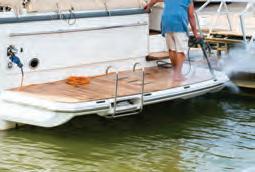


By Joe Woody, Publisher The Angler Magazine, Great Smoky Mountains
Whew! What a month. I’m sure nobody saw a devastating hurricane coming in October…but here we are.
We’re now in week three of rebuilding and I think we are just coming to grips with what this storm brought us. I know it could be months or even years for some areas to completely dig out of the mud, fallen timber and debris.
I was in the dark for most of the first week to ten days, with no power, internet or phone service in our house in Arden, NC just south of Asheville. I was just getting bits and pieces of secondhand information about what had happened. Now that the pics, stories and videos are out, then seeing it with my own eyes, I’ve had a hard time describing what I’ve seen. I’m not sure I’ve come to terms with my emotions on the whole thing either.
But I do know this: I’ve seen amazing acts of selfless service, acts of kindness and tireless effort by so many folks that I stopped being surprised by it. Kind of reminds me of what Admiral Chester Nimitz said about his experiences on Iwo Jima… “Uncommon valor was a common virtue”. I don’t want to say we are in a war zone, but our mountain communities have galvanized into an army of helpers and care givers.
I’ve seen folks drive mule trains loaded with supplies into places no longer reachable by vehicles. I’ve seen teachers, home makers and pastors volunteer as logisticians and route clearance specialists. Veterans have come out of retirement to clear airfields and load helicopters.
I’ve also seen our angling community organize distribution points and deliver untold tons of supplies to our communities… Here’s to you Maggie Valley Fly Shop… Here’s to you David Ramsey. There are so many that I can’t name them all here.

I know we’ve got a long way to go but our progress is staggering. We’ve shown our grit as Southern Highlanders and our forefathers would be proud.
If there is one thing I want to relay to the reader this month… Don’t cancel your plans in Upstate South Carolina, Western North Carolina, East Tennessee, North Georgia or North Alabama. Of course, use common sense and stay away from places that are dangerous. There are lists of nogo areas out there. Please look them up and take note, but for the most part: We are open for business. Stable Rocks Ya’ll, JW

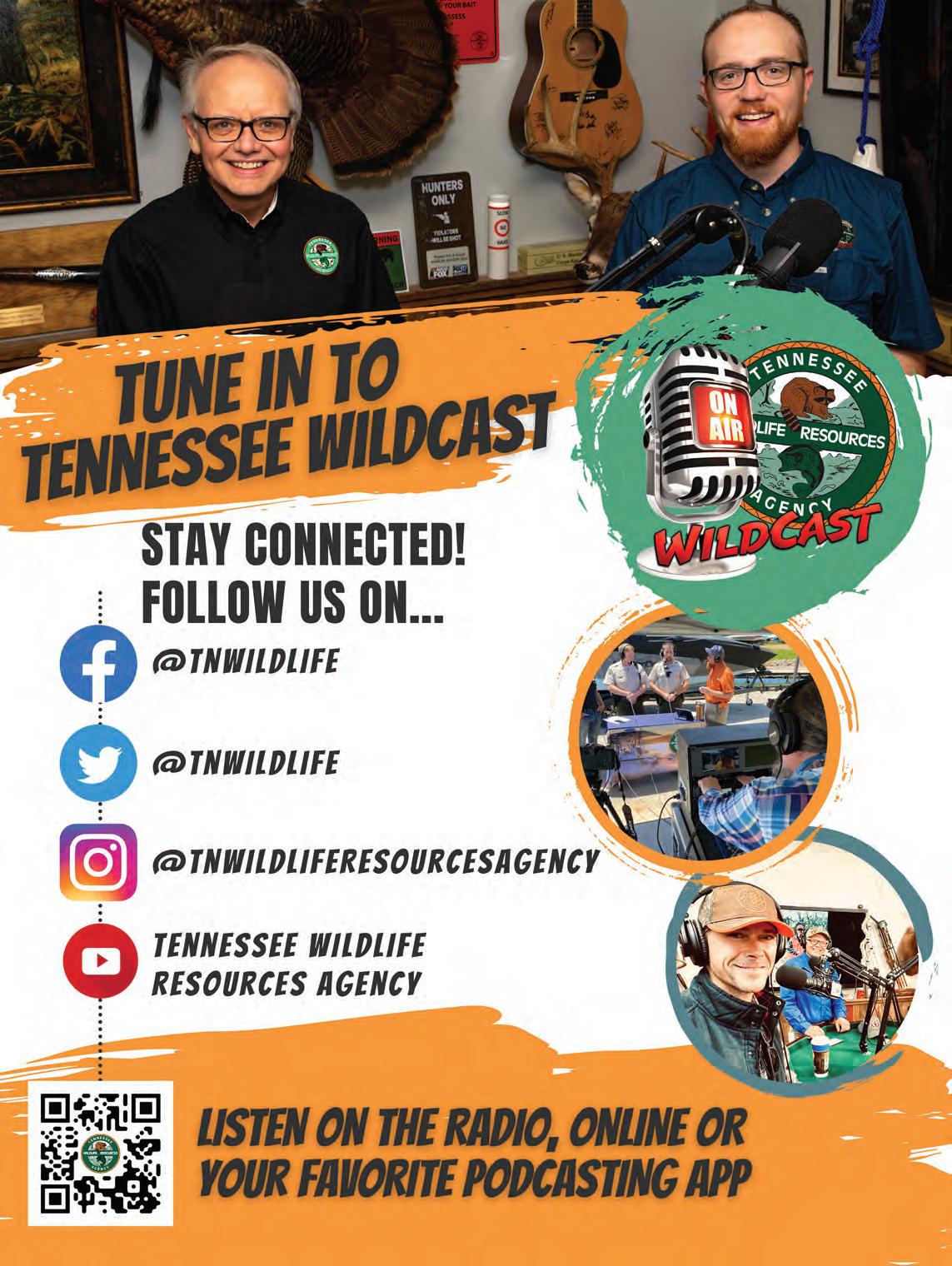
By David A. Ramsey
It is Sunday night, the 6th of October. I’m sitting at my desk in the familiar, yet now guilty comfort of my Unicoi, TN home when I hear the faint thump-thump-thump-thump of an approaching Black Hawk helicopter. As the thunderous machine draws closer, I react as I have too many times this past week—my heart beats faster, my lips tighten together and my eyes begin to well up. I swallow hard and fight, yet again, the image forming in my mind of that nearby place of utter and massive destruction toward which the craft is headed.
I hurt with a different kind of pain, which I haven’t experienced before in my now fairly long life—a life, I’m proud to say, deeply connected to these ridges and hollers and rivers, but more importantly, to my many kindred souls who have also chosen to build and live their lives among these ancient highlands.
For a quarter century I have worked daily with the hikers, fishers, guides, paddlers, horse riders, climbers, mountain bikers, hunters, foresters, conservationists, trail maintainers and many others with whom I share a deep-down passion for these mountains and the outdoor community they sustain. And tonight, I know beyond question that many from that community—having lost livelihoods, businesses, homes and loved ones—are suffering a kind of pain far deeper and more brutal than mine.
It is these same passionate people who know in their souls, as do I, the true value of the mountains—a value far greater than that of “real estate” or “resources.” It is the value found in a stunning Unaka Mountain sunset, the impossible purple of a Roan rhododendron, the autumncooled mist of a Rocky Fork morning or those treasured moments with


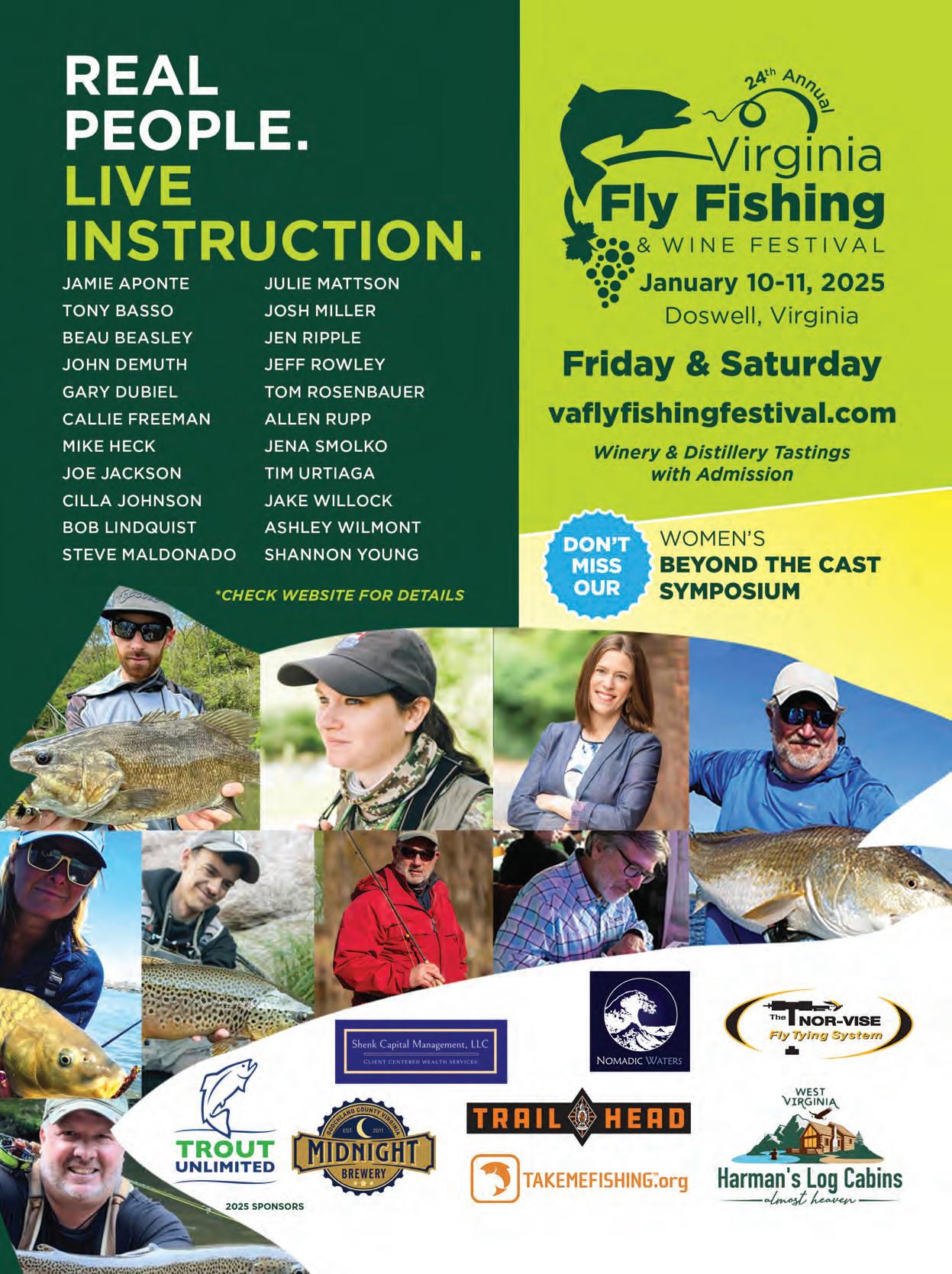

fireside friends under silver-filled skies. These are but a fraction of the valued things that have centered us, given us our sacred sense of place and purpose and belonging. And amid all the loss, they are some of the things still here, waiting to help us through to a brighter mountain day. Wendell Berry, in his famous poem, “The Wild Geese,” wrote, “And we pray, not for new earth or heaven, but to be quiet in heart and in eye clear. What we need is here.” So much of what we need is still here. Collectively, we are its keeper. Certainly, it is ours.
Yes, of course, my heart is shattered for all whose lives have been so violently damaged, disrupted or even lost in the catastrophe of Helene’s impact on the Southern Mountain region. But tonight, by the soul-piercing sound of the Black Hawks passing above me, my heart, my head, my whole being is with my treasured mountain and riverloving community. You know who you are and you truly have my love and my greatest hope and prayer for your recovery, your peace and your renewal.
David Arthur Ramsey is an outdoor photographer, writer and conservationist, born and raised in the mountains of northeastern Tennessee. His outdoor writing and photography have been published locally, regionally and nationally and are most often associated with work to preserve and protect threatened lands and waters throughout the Southern Appalachian Mountains. Field and Stream Magazine and Toyota Motor Company named David the National Hero of Conservation in 2011 for his leadership in saving the 10,000-acre Rocky Fork watershed in northeastern Tennessee. His newly published book, Rocky Fork: Hidden Jewel of the Blue Ridge Wild, tells the story, through his rich photography and his first-hand account, of the more than decade-long battle to preserve this Appalachian and American treasure.
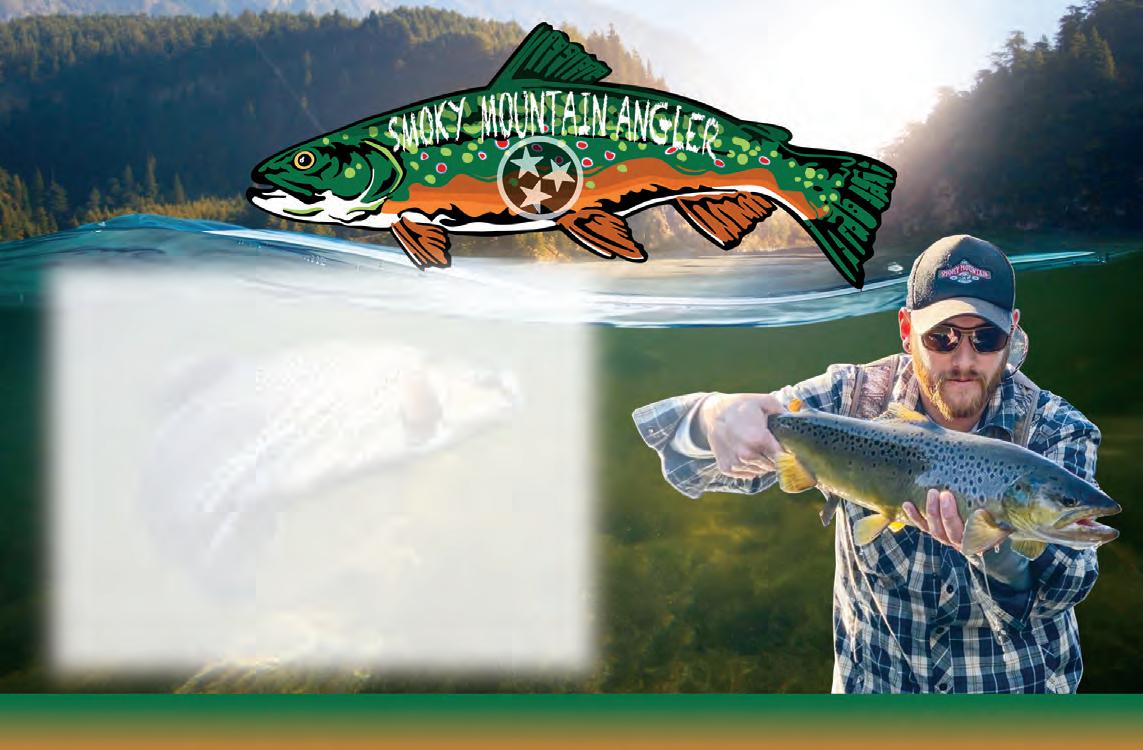


By Perry Hensley
Tellico Lake Tournament Results Kick off! 2024-2025 season is underway. We had 22 boats participate in the tournament this morning. With warm temps forecasted, it made for good, but a hot event. Fish were active and easily caught mostly on brush in 15 to 30 ft of water.
The team with the winning weight today was the team of Joel Nash and Skeeter Hayes. With a 7 fish bag weighing 7.80 Lbs. Congrats gentlemen on the win.
In second was Jimmy Pratt and Ray Pratt with a bag of 7.37 Lbs.
In third was the team of Matt Xenos and Josh Sanders with 7.00 Lbs.
Fourth place was Daniel Holt and Alan Wetzel with 6.96 Lbs. Rounding out the money was Ronnie Everitt and Hunter Stombaugh with 6.38 Lbs.
Sniper Marine LLC Big Fish pot was won by Ronnie Everitt and Hunter Stombaugh with a big fish of 1.43 Lbs. Thank you to all that fished and we can’t wait to see you all at Watts Bar on October 19th launching from Tom Fuller Boat Ramp.

Results Provided by The East Tennessee Crappie Tournament Trail – Matt Xenos President.
As always, we hope you get out and enjoy all that our creator has given us.

By Ben Bailey
The time was late October we rose before the dawn, Six men in concert, yet each was still alone. No one led and no one followed yet each one did his part, Like a dance or a piece of music that someone plays by heart.
We met at the appointed place and loaded all our gear. We left our comfortable beds behind and all those we hold dear. We were off on an adventure, a week in the woods or more, None of us really knew for sure what this week held in store.
Three of us were walking down from Clingman’s lofty Dome, Three of us would pick us up and return us back to home. It was an honor to be among them, good men everyone, All of them are brothers and one also my son.
We passed by the Oconaluftee a little past Cherokee, Where out of the mist walked a majestic elk like a ship out on the sea. I’ll never forget that image burned forever in my mind, Life went into slow motion; I lost all sense of time.
The views at the top were wonderful, majestic and serene. The valleys still wore their cotton linens, the air so fresh and clean. Mountain ash adorned with rubies, emeralds in the pine,
The woods breathed out a rich perfume, healing for both the heart and mind.
The packs were heavy, the air was chill. The way was long but all downhill.
Double Springs Gap we take a water break, Talk to some hikers while we hesitate.

We made Hazel Creek Cascade that first night on the trail, Felt good to rest our backs and sit down on our tail.
Steak and baked potatoes, our celebratory meal, I’ve had bigger but never better, it was quite a deal.
The brookies were small but beautiful and responded to my fly, We left them there in their quiet pools nestled against the sky. A silent testimony to all that’s pure and clean,
A fish in whom there is no guile with beauty like a queen.
The next day took us to Proctor Creek then on to Calhoun, The weather couldn’t have been better we even had a full moon. The fishing was good, we all caught our share,


Beanpole had left me a message saying I should stop by his house after work to see his new project. A bit apprehensive, I decided to go anyway. I mean, this is the same guy who opened a vendingmachine business with equipment that dispensed live crickets.
He was sitting at his kitchen table smiling across a pile of animal hides. Possum fur, fox tails, and deer hair were stacked in abundance. In front of Beanpole stood a tabletop vise with a jig hook in its grasp and thread hung underneath on a bobbin.
“Wow, Beanpole, that’s quite a deal you have going. What exactly are you doing?”
Beanpole beamed with pride as he explained.
“I am starting a business tying jigs and flies,” he said. “Most people struggle to make money but I have a cheap supply of materials that is the secret to turning a profit.”
“What’s that?” I asked.
“Roadkill. Anytime I see a critter on the shoulder of the road, I just pull over and trim off the useful parts. Then I bring them home, skin them out, and preserve them. All my competitors spend thousands buying this stuff that I find for nothing.”
I stood looking over the assortment of wild furs and feathers Beanpole had accumulated. His plan seemed logical which set me back for a moment. Logic and Beanpole generally didn’t travel together.
“Who buys these jigs and flies?” I asked.
“Tackle shops,” replied Beanpole. “Until people hear about them and start calling me up direct. I have orders for dozens already.”

“So is this legal, picking up all this stuff?” I asked, still not sure why this made sense.
“I don’t know, but to me, it’s a little like picking up litter,” said Beanpole. “It’s just going to waste.”

“True enough,” I said. So I gave up trying to find a flaw in Beanpole’s business plan and just watched him tie crappie jigs for a while. Then I congratulated him on his business venture and went home.
Over the next few weeks, I started noticing Beanpole’s flies and jigs in the local tackle shops. Called “Beanpole’s Bugs,” these concoctions were mostly in natural fur colors with some of the bucktails dyed red or green. Even the marina had displays in their shop and by all appearances sales were good.
So I was a little surprised the day Beanpole opened my door and proceeded on in without knocking. In his arms was a box overflowing with animal hides. And Beanpole himself looked like he had been dragged through blackberry brambles by wild hogs. He sat down and let out a sigh like a balloon coming untied.
“What’s up?” I asked, knowing a story would follow.
“Nell said to get rid of all this fly-tying stuff. So I thought you might want it.”
“What’s the problem?”
“It’s a long story,” said Beanpole, as if I might let him leave without hearing it. For some reason, he always tried this approach even though he knew it wasn’t going to happen.
“I’ve got the time,” I said.
“Well, Nell and I were coming back from church in her car on Sunday. It was a nice day, sunny and not too warm, when I noticed some roadkill up ahead. It’s like I have a radar for that stuff now.”
“So I pulled over slowly, let another car pass, and got out to see what it was. To my surprise, it was a bobcat.”
“Don’t see those too often,” I added.
“No, I was excited. Maybe a little too much as I picked up the whole critter and laid it on the back seat of Nell’s car.”
“What did she say about that?”
“Not much at first,” said Beanpole. “Then quite a bit. As it turns out, the bobcat wasn’t dead.”
“You mean it woke up?”
“Exactly,” said Beanpole. “It must have been stunned. Have you ever been driving down the road when a bobcat wakes up in your backseat?”
I paused as if I needed to think about it, but answered, “No, can’t say I have.”
“Well, this one wasn’t too thrilled about the free ride. It started doing laps around the car.”
“That must have been something to see,” I offered.
“Worse than that. Nell started smacking at it with her purse. I was trying to drive and grab the cat with my free hand. Every time it latched onto my arm I screamed, which scared Nell, and got the bobcat going faster. It attacked her Sunday hat, clawed up the upholstery, and then lit into me.”
Beanpole took a breath as if seeing it all happen again.
“Then, the bobcat jumped into the front seat and started attacking us both. By now, Nell had worn out her purse flogging the cat and had pulled up a floor mat to defend herself. I was trying to pull off on the side of the road but was weaving all over from the cat jumping on me. Finally,

THE DESTINATION continued from page 9
God was good to all of us but particularly good to me there.
These are God’s finest sculptures, anyone can see.
And here we walk among them wonderstruck and free. It was a veritable garden kept by God’s own hand, Even the logging scars inflicted on her by man.
I’m inspired by her beauty humbled by her power, Indebted by such a gift it becomes a worship hour. An out of doors cathedral illuminated by the sun, An altar made of granite open to everyone.
Bone Valley then to Sugar Fork, we’d all been here before, But it all looked and felt different coming in the back door. We pitched our tent and stretched our tarp the first time on our way, It’s good we did for it was raining before the break of day.
The fish didn’t care they were already wet, so we caught a few. David missed a big one using alternative methods too.
Halfway up the gorge there’s a waterfall that plunges to a beautiful pool,
That’s where Moby Dick lives you can’t catch him that’s the rule.
We walk on down to Proctor trudging in the rain, Our mood a little somber a little akin to pain.
Half want to stay on a while and fish a little more, Half want to get back home to those whom we adore.
Jim, Jerry and Jason are there to meet us and light a waiting fire, A welcome sight if ever I saw one a dry place in the mire.
We sit and talk and remember way up in the night, We speak of beauty seen and obstacles, every fish and fight.
you come far Pilgrim... It feels like far.
I thought to roll down the windows and the bobcat went sailing out the back window and ran off into the woods.”
Looking Beanpole over it appeared he might have escaped stitches but had enough scrapes that he’d probably be moving gingerly for a while.
“So I wanted to give you all this stuff,” he said, pushing the box across the table.
“Why won’t Nell let you tie flies anymore?”
“She says we can’t afford it.”
“I thought you were making money.”
“Not when you add in the damage to the car. The bobcat did over $2,000 damage to the interior and the insurance only covers roadkill from outside the car.”
“Besides,” said Beanpole with a wistful look in his eye, “Nell is afraid I might come across a bear.”
“Making Jigs and Flies” is an excerpt from Jim’s award-winning book, Fishing With Beanpole. You can order copies from Amazon or get autographed copies at www.acreektricklesthroughit.com.

GATLINBURG, TN—The U.S. Board of Geographic Names voted today in favor of the formal request submitted by the Eastern Band of Cherokee Indians (EBCI) to change the name of Clingmans Dome (FID #1326387) to Kuwohi. Kuwohi, is the Cherokee name for the mountain and translates to “mulberry place.” In Cherokee syllabary, the name is . The National Park Service strongly supported the name restoration and applauds today’s decision, which also received support from local communities and governments.
Kuwohi is a sacred place for the Cherokee people and is the highest point within the traditional Cherokee homeland. Kuwohi is visible from the Qualla Boundary, the home of the EBCI. Efforts are already underway to update signage, website and other materials with the Kuwohi name.
“The Great Smoky National Park team was proud to support this effort to officially restore the mountain and to recognize its importance to the Cherokee People,” said Superintendent Cassius Cash. “The Cherokee People have had strong connections to Kuwohi and the surrounding area, long before the land became a national park. The National Park Service looks forward to continuing to work with the Cherokee People

to share their story and preserve this landscape together.”
The proposal was submitted in January of this year by EBCI Principal Chief Michell Hicks following an effort started in 2022 by Lavita Hill and Mary Crowe, both enrolled EBCI members, to restore the traditional name of the summit.
Kuwohi is one of the most popular sites in Great Smoky Mountains National Park with more than 650,000 visitors per year. It is the tallest point in Tennessee and the third-highest summit east of the Mississippi River.
The park closes Kuwohi for three half days annually to provide access to predominantly Cherokee schools to visit the mountain and learn the history of Kuwohi and the Cherokee people from elders, Cherokee language speakers, culture bearers and community members.
Clingmans Dome has always been known as Kuwohi to the Cherokee People. The mountain became known as Clingmans Dome following an 1859 survey by geographer Arnold Guyot, named for Thomas Lanier Clingman who was a lawyer, U.S. Representative and Senator from North Carolina, and Confederate Brigadier General.
–NPS–


By Scott Norton
Falling temperatures means changing patterns. Bass will be scattered from shallow to deep so covering water is essential. Good news is you can power fish to locate active feeding bass. Baits on deck of your boat should be crank-baits, topwater baits, spinner baits, jigs, worms, and finesse baits.
You will be able to change gears based on the mood of bass with a good line up. If you have front facing sonar you will be able to fish more efficiently by judging how they react to your presentation. Being able to see activities underwater can help paint a picture of what type of pattern to use as well. Technology has allowed us to use what we already know to cut down on time to get down to business.
Now is a great time to be fishing just knowing that bass are in the mood to feed up for winter time. As winter approaches you find that bass are at their heaviest in the beginning of winter. This can be a great time of year for those trophy hunters. Smaller bass will eventuality start to hibernate with cold temperatures while large bass will still have to feed to maintain their own mass. You will always find a trade off with the changing of seasons but you will always have something for all types of anglers.
Today, with the explosion of streaming platforms, information is free at will. Learning secrets of many different anglers comes easy to the ones that seek it. Fishing in general has gained so much with technology and competition of bait companies that make it is fun to just try new things. We can go back to where it all started and use original baits from the
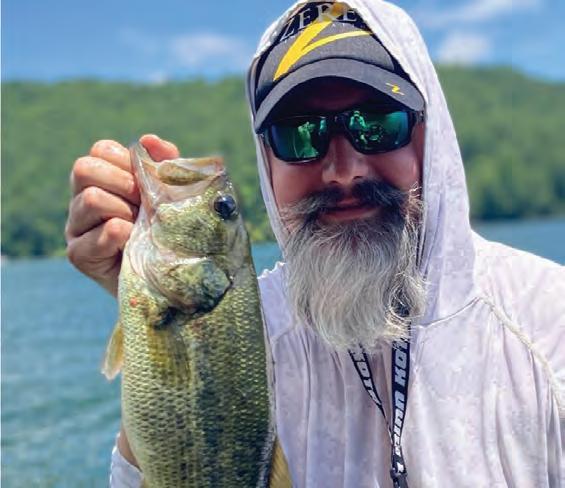
past that are tried and true to reintroduce something bass has not seen in a long time.
This sport brings friends and family together, whereas the fast pace of life separates us. Nature provides that fulfillment we seek with God and his creation. So get out there and make new memories.
Scott Norton is a Western North Carolina native. Born in Asheville, N.C., he is a long-time hunter, angler and weekend warrior.



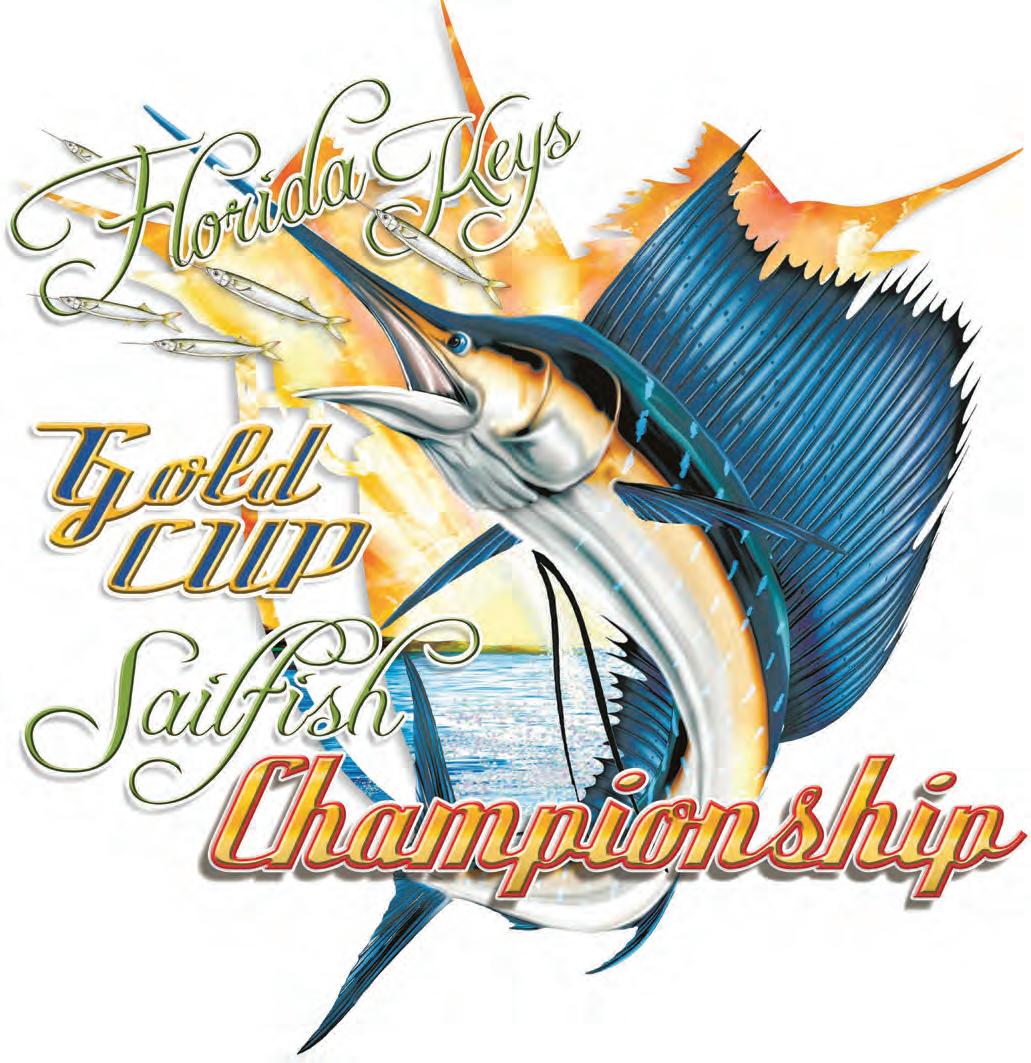

TRACY PATTERSON
Costa Rica is a renowned destination for anglers, ofering calm seas, ideal fshing conditions, and worldclass fshing. It is especially popular among female anglers due to its safety, tournaments, and supportive crews, making it an unforgettable experience.
If you’re seeking high odds of catching billfsh, Costa Rica is the place to be. On a full day ofshore, it’s common to get multiple strikes. Te fat, calm seas make it enjoyable for anglers of all levels, letting you focus on reeling in catches rather than battling rough waters.
Costa Rica hosts two ultra prestigious women-only tournaments: the Ladies Angler Tournament at Los Suenos Resort and Marina, and the Pescadora Billfsh Championship at Marina Pez Vela. Both tournaments create a supportive

yet competitive environment for anglers of all skill levels. Te Pescadora Championship is
particularly unique, ofering two Female Angler of the Year awards based on diferent fshing techniques. It encourages women to challenge themselves and grow in the sport.
Costa Rica is ranked #1 in Central America for safety, and recent laws further protect women from harassment. Female anglers can feel comfortable walking around resorts and marinas. Charter feets also adhere to strict safety regulations, ensuring peace of mind while on the water.

Whether you’re staying at a boutique hotel or a private home, Costa Rica ofers a range of accommodations for groups of all sizes. Many resorts are conveniently located near marinas, allowing easy access to fshing trips and other adventures.
Costa Rica is home to many women who support the lady angler movement. Te captains and crews are eager to teach beginners, helping them hook their frst billfsh or refne their skills. With women accounting for a growing percentage of anglers, Costa Rica ofers a welcoming and empowering environment for female anglers.
Whether you’re an experienced angler or a frst-timer, Costa Rica ofers an unbeatable fshing experience. Its exceptional conditions, tournaments, safety, and camaraderie make it the top destination for lady anglers.






IBy Capt. Michael Okruhlik
t’s that thrilling time of the year, founder time! Te fall migration, reaching its peak in November along the Gulf Coast, promises an exciting infux of founder to their spawning grounds. Louisiana, following Texas, has also implemented a closed season during this peak run. But remember, the inability to keep fatties during this time doesn’t dampen the thrill of catching them.
Flounder will be migrating into the Gulf during this time, so the apparent ambush areas will be around passes that lead to the Gulf. Te founder will position themselves in diferent regions based on the tide level and current strength. In addition to using their burying-in-the-sand ambush technique, they also utilize structure in several ways.
First, any object that protrudes above the bottom is a great ambush point. Tis ofers a current break for forage fsh to gather directly above a buried founder, making for an easy meal. Objects such as bulkheads are also great ambush points. Flounder like to position themselves against the solid barrier and I think this can be for two separate reasons depending on what other factors are at play. As mentioned above, it could be a current break, especially if the bulkhead has a corrugated shape. When a founder settles against a bulkhead, its prey has less direction in which it can fee, allowing the founder greater odds of capturing it. When targeting founder, never pass up a bulkhead.
Secondly, founder can be caught using a variety of lures and live bait, especially if you keep it in contact with the bottom to increase your chances of a strike. When it comes to live bait, a frisky mullet is your best bet for landing a larger founder. If you’re aiming for a trophy, this is the way to go. Personally, I prefer fshing with lures, particularly the paddle tail style. Jerk-style sof plastics and bucktails can also be efective when worked in the same manner.
If I had to pick a tide to maximize my time on the water, I would choose a medium fow outgoing. Although there are no set rules that fsh always follow, I feel the founder feed more on their way out to the gulf, utilizing

the current to ease their journey. Contrary to the incoming tide, they bury themselves rather than fght against the current.
Don’t let the closed season discourage you from targeting founder during this migration; it will have its advantages. Going forward we will undoubtedly have a larger founder population, but the instant gratifcation will be a lot less trafc in our favorite founder spot! I will use the closed season to target a new personal best this season, as should you.
Capt. Michael Okruhlik is the inventor of Knockin Tail Lures® and the owner of www.MyCoastOutdoors.com.















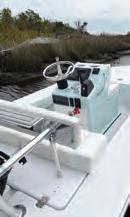




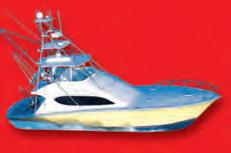


OTim Barefoot

f course, October is when it all starts, but if you like to bottom fsh, then November is the month the turbo kicks in, leading to the crescendo of the year… December. I’ve always said the week of Christmas is the apex of the grouper fshing calendar, and I’ll stand by that statement now. Tis is when larger (male) gags move inshore to establish their territory on inshore ledges, wrecks, and live bottom, much like buck deer making scrapes and rubs to mark their territory. Tese males now wait for the smaller females to show up in numbers to spawn, and the bite traditionally goes of the charts.
A small piece of hard bottom can attract large numbers of fsh if it contains the right ingredients. First and foremost, you need to locate their food. Go to the places that have traditionally held the bait—cigar minnows, sardines, beeliners, etc. “Find the bait, fnd the fsh” has been my thought process for years. Tese fsh won’t show up to a party without food—common sense. You can anchor up on a stack of bait without seeing a big mark of fsh, but afer a few bites, you’ll notice the screen light up with more and more fsh showing up.
Anchoring up is key to shallow water grouper fshing. Te sound of fsh feeding travels great distances and doesn’t go unnoticed. Once an area is fred up, constant bites supercharge the atmosphere down there. If you’re drifing, you won’t get a specifc area fred up; you’ll only go back where you got bites. But if you anchor, the fsh come to you to join in. Tis draws the alpha predators—big sharks. Yes, you’ll lose some fsh and tackle to these bruisers, but enjoy the ride while it lasts. When sharks show up, it’s time to move on to another ledge or further down the same one.

Back to noise... Keep in mind that while we hear very little, fsh hear everything. Sound travels far underwater, and everything you do on deck—slamming cooler lids, dropping hard objects, loud music, yelling—is heard by the fsh. It could be the diference between catching smaller cows or big bulls. Large male groupers didn’t get old by being dumb. You don’t kill big bucks by being noisy, so treat your fshing with the same respect.
Te folks that target grouper come home with grouper. Te ones who go “bottom fshing” with cut bait and chicken rigs come home with “bottom fsh.” As Franklin Covey said, “begin with the end in mind.” If you’re targeting grouper, think and act like it. Put baits on the bottom that avoid trash bites. Spend time jigging up some of that “trash” and drop them back down on a Decoy Jig for optimal results. Watch some of my videos on YouTube (Tim Barefoot) for examples of what I’m saying.
For more information, visit barefootcatsandtackle.com.





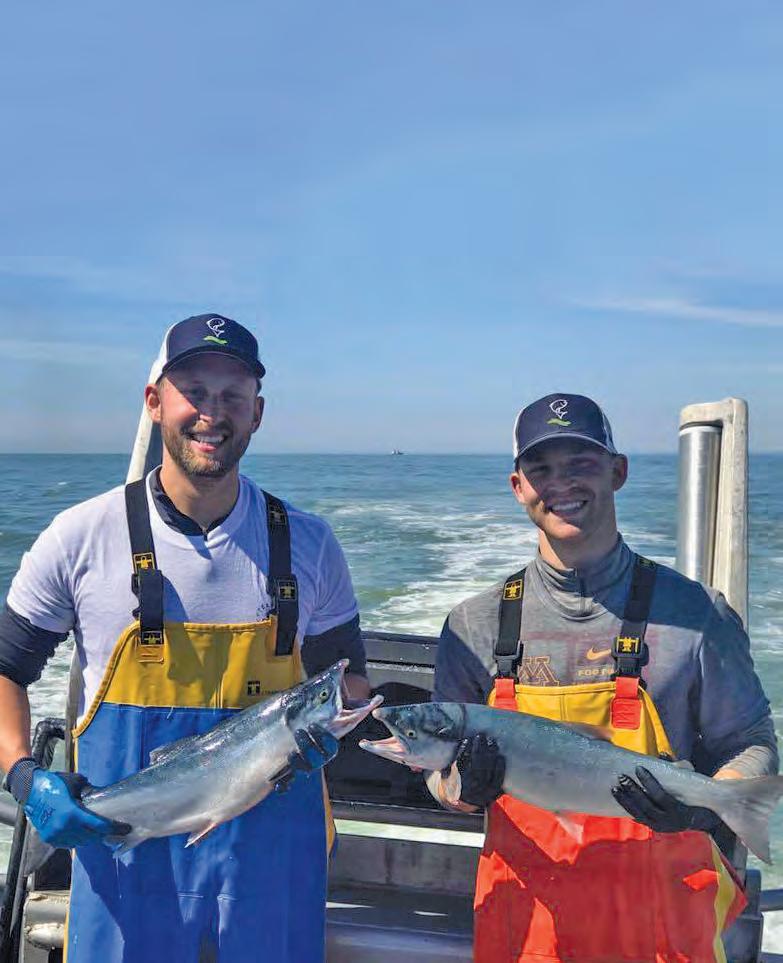


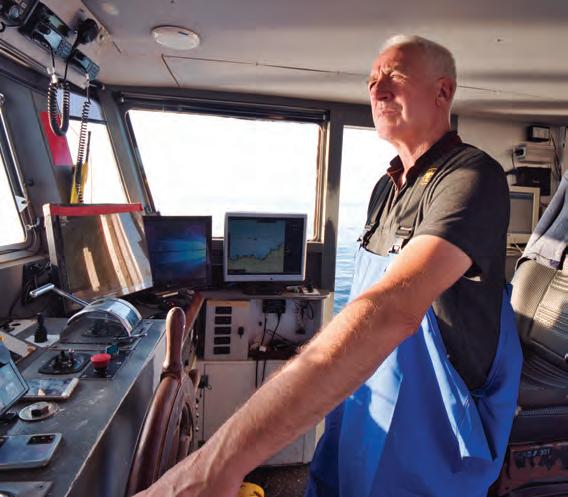
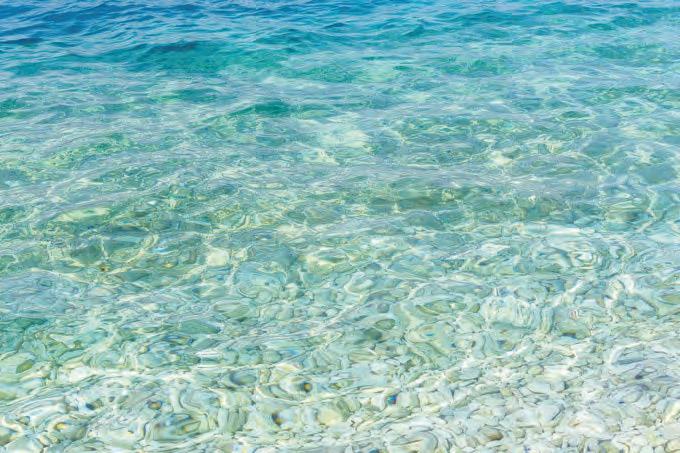











You want AI Routing! Let TZ MAPS with AI Routing make route planning a snap. Don’t take our word for it. Scan here to see for yourself how easy it is!